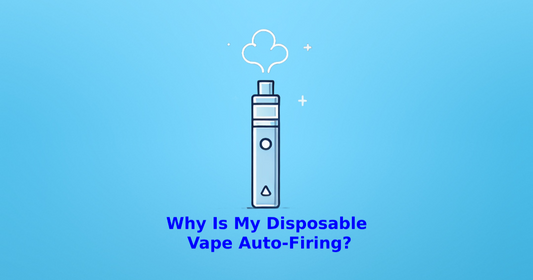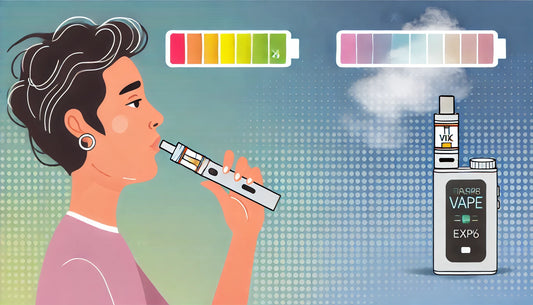Introduction
Vaping and smoking are two common ways to get nicotine into your body. When you smoke a traditional cigarette, you burn tobacco and inhale nicotine along with many harmful chemicals. Vaping, on the other hand, involves using e-cigarettes to heat a liquid (which may contain nicotine) into a vapor that you breathe in.
The debate over vaping vs smoking is very important for public health. We already know that smoking is extremely dangerous and can cause serious illnesses like lung cancer and heart disease. Vaping is often promoted as a safer option, but it may also have its own health risks that we're still learning about. It's crucial to understand these differences so that you can make informed decisions about using nicotine.
In this article, we'll explore several key topics:
- The Risks of Smoking: We'll take a close look at all the well-known dangers of smoking cigarettes.
- Understanding Vaping: We'll explain how e-cigarettes work and clear up any common misunderstandings.
- Health Implications: We'll compare the potential long-term effects on your respiratory system and heart health.
- Impact on Youth: We'll examine why more young people are starting to vape and what problems it can lead to.
- Regulatory Landscape: We'll talk about the current rules and laws that try to balance making vaping products available with keeping people safe.
- Harm Reduction and Smoking Cessation: We'll explore how vaping can be used as part of a strategy to gradually quit smoking or reduce the harm it causes.
Each section will give you detailed information to help you figure out whether vaping or smoking is less risky for your health.
💡 Fun Fact:
Did you know that vapes usually contain less nicotine than cigarettes? This is important for people who are trying to quit smoking or cut down on their nicotine intake.
The Risks of Smoking
Cigarette smoking is a well-documented public health crisis, recognized for its extensive array of health hazards. The scientific consensus is clear: smoking tobacco products poses significant risks to human health.
Health Hazards
Smoking is the leading cause of preventable death globally. It contributes to a multitude of serious conditions, including:
- Lung Cancer: Tobacco smoke contains carcinogens that damage lung tissue, leading to malignant growths.
- Heart Disease: Chemicals in cigarettes cause inflammation and narrowing of blood vessels, increasing the risk of heart attacks and strokes.
- Respiratory Disorders: Chronic Obstructive Pulmonary Disease (COPD) and asthma are exacerbated by the toxins in cigarette smoke.
Harmful Chemicals
Tobacco smoke is laden with harmful substances. Key chemicals include:
- Nicotine: While primarily addictive, nicotine also raises blood pressure and heart rate.
- Tar: This sticky substance accumulates in the lungs, obstructing airways and damaging alveoli.
- Carbon Monoxide: By reducing oxygen delivery to vital organs, carbon monoxide exacerbates cardiovascular strain.
- Formaldehyde: A known carcinogen that irritates the respiratory system.
Understanding the breadth of these risks underscores why smoking remains a critical public health issue.
Understanding Vaping
What is Vaping?
Vaping refers to the use of e-cigarettes disposable or other vaporizer devices as a method of nicotine delivery. Unlike traditional cigarettes, which burn tobacco to produce smoke, e-cigarettes heat a liquid (commonly known as e-liquid or vape juice) to create an aerosol, often referred to as vapor. This vapor is then inhaled by the user.
How Do E-Cigarettes Work?
E-cigarettes typically consist of:
- Battery: Powers the device.
- Atomizer: Heats the e-liquid to convert it into vapor.
- Cartridge/Tank: Holds the e-liquid.
- Mouthpiece: Used to inhale the vapor.
The mechanism involves activating the battery (either automatically when you inhale or by pressing a button), which powers the atomizer. The atomizer heats up, converting the liquid in the cartridge into an aerosol that can be inhaled.
Ingredients in E-Liquids
E-liquids generally contain:
- Nicotine: The addictive substance also found in traditional cigarettes.
- Propylene Glycol (PG) and Vegetable Glycerin (VG): Serve as carriers for nicotine and flavorings.
- Flavorings: Added for taste, available in a wide variety of options.
Common Misconceptions About Vapor Products
There are several misconceptions about vaping and e-cigarettes:
- "Vapor Products are Harmless":
- While vaping exposes users to fewer toxic chemicals compared to smoking, it is not without risks. E-liquids can contain harmful substances like diacetyl, which has been linked to lung disease.
- "E-Cigarettes Don’t Contain Nicotine":
- Many people assume that e-cigarettes are nicotine-free. In reality, most e-liquids do contain nicotine, making them highly addictive.
- "Vaping is Just Water Vapor":
- The aerosol produced by e-cigarettes is not just water vapor; it contains nicotine, flavors, and other chemicals that may be harmful when inhaled.
Understanding these aspects of vaping helps clarify how it differs from traditional smoking and highlights both its potential benefits and risks. This sets the stage for evaluating its health implications more thoroughly.
The Health Implications of Vaping vs Smoking
Health Risks of Vaping
Current research highlights various potential adverse effects of long-term vaping, particularly on respiratory health. Studies indicate that while vaping exposes users to significantly fewer toxic contaminants compared to smoking, it is not without risks. Users inhale substances such as propylene glycol, vegetable glycerin, and flavorings, which can cause lung irritation and inflammation.
Potential Adverse Effects:
- Respiratory Issues: Initial findings link vaping to conditions like chronic bronchitis and asthma exacerbation. Some cases have even identified a condition known as "popcorn lung" (bronchiolitis obliterans), primarily from exposure to diacetyl in certain e-liquids.
- Cardiovascular Concerns: Nicotine in e-cigarettes raises blood pressure and heart rate, potentially contributing to cardiovascular problems over time.
Health Risks of Smoking
Cigarette smoking is well-documented for its severe health hazards. Tobacco smoke contains thousands of harmful chemicals, including at least 70 known carcinogens. These toxic contaminants contribute directly to the development of multiple diseases.
Established Health Hazards:
- Lung Cancer: Smoking is the leading cause of lung cancer worldwide. The inhalation of smoke damages lung tissue, leading to mutations that can result in cancerous growths.
- Heart Disease: Chemicals in tobacco smoke promote atherosclerosis (hardening and narrowing of the arteries), significantly increasing the risk of heart attacks and strokes.
- Respiratory Disorders: Chronic obstructive pulmonary disease (COPD), emphysema, and chronic bronchitis are prevalent among smokers due to prolonged exposure to harmful smoke particles.
Evaluating Relative Harms
When comparing vaping and smoking, reduced exposure to toxicants in vapor products leads many experts to view them as a less harmful alternative. However, this does not equate to safety. Short-term concerns such as nicotine addiction remain significant for both methods. Long-term health implications of vaping are still under investigation, with unknown risks emerging as a crucial factor in ongoing research.
Understanding these nuances is vital for making informed choices about nicotine use. Acknowledging both the immediate health risks and potential unknowns allows individuals to weigh their options critically.
1. Impact on Lung Health

There is growing evidence that suggests vaping can harm the lungs and cause respiratory problems. One of the most concerning conditions associated with vaping is bronchiolitis obliterans, also known as "popcorn lung." This condition is characterized by damage to the small air sacs in the lungs, leading to scarring.
It's important to note that popcorn lung has been primarily linked to the use of illegal THC cartridges rather than nicotine e-cigarettes. However, we cannot ignore the potential dangers of inhaling vape aerosol.
Vape Aerosol vs. Cigarette Smoke
Here's a comparison between the aerosol produced by vaping and the smoke from cigarettes:
- Vape Aerosol: Contains fewer toxic chemicals compared to cigarette smoke but still poses risks. Ingredients like propylene glycol and vegetable glycerin, when heated, can produce harmful substances such as formaldehyde.
- Cigarette Smoke: A well-documented cause of serious respiratory conditions. The inhalation of smoke from burning tobacco exposes individuals to a range of harmful chemicals, including tar and carcinogens.
Respiratory Conditions
Smoking cigarettes has long been known to contribute to various respiratory diseases:
- Lung Cancer: Studies have consistently shown a strong connection between smoking and lung cancer. Tobacco smoke contains many cancer-causing substances that gradually harm the lungs.
- Chronic Obstructive Pulmonary Disease (COPD): Research has demonstrated how prolonged exposure to cigarette smoke leads to ongoing inflammation and blockage of airflow in the lungs.
Comparative Analysis
While vaping may seem less harmful than smoking traditional cigarettes, it still carries its own set of risks. Both methods can potentially harm respiratory health:
- Short-Term Effects: Vaping can cause symptoms such as coughing and difficulty breathing, similar to smoking.
- Long-Term Risks: We are still uncertain about the full extent of the health effects from prolonged vaping. However, it is worth noting that compared to smoking, vaping exposes users to fewer harmful substances.
It is crucial to understand these differences in order to assess the potential harms and make informed decisions about using nicotine products.
2. Risks for Cardiovascular Health

Both vaping and smoking products contain nicotine, which has a significant impact on cardiovascular health. This stimulant affects the heart and blood vessels, potentially leading to serious conditions.
How Nicotine Affects Cardiovascular Function
Nicotine's immediate effects include:
- Increased Blood Pressure: Nicotine causes the release of adrenaline, which elevates blood pressure.
- Elevated Heart Rate: Adrenaline also accelerates heart rate, placing additional strain on the cardiovascular system.
These immediate responses can contribute to long-term cardiovascular damage when exposure is prolonged.
The Link Between Nicotine and Heart Diseases
Long-term exposure to nicotine plays a crucial role in the development of heart diseases such as atherosclerosis. This condition involves:
- Plaque Buildup in Arteries: Nicotine promotes the accumulation of fatty deposits in blood vessels.
- Reduced Blood Flow: Plaques narrow arteries, restricting blood flow and increasing the risk of heart attacks and strokes.
Comparing Vaping and Smoking
While both methods deliver nicotine, their long-term cardiovascular risks differ due to other components involved:
- Combustible Tobacco Smoke: Contains numerous harmful chemicals that worsen cardiovascular risk.
- Examples: Carbon monoxide, tar.
- Vapor from E-Cigarettes: Lacks many toxicants found in tobacco smoke but still poses risks due to nicotine.
Research indicates that vaping may be less harmful than smoking regarding cardiovascular health but is not without risks. Long-term studies are needed to fully understand these implications.
Understanding these differences helps us make better choices about nicotine use and emphasizes the importance of looking for safer options or support in quitting.
3. Vulnerability of Youth
The increase in youth vaping rates has become a significant public health concern. The youth vaping epidemic is primarily driven by the allure of flavored products and aggressive marketing tactics employed by certain e-cigarette brands. Flavors like fruit, candy, and mint have a strong appeal to younger users, making vaping more enticing compared to traditional tobacco products.
Flavored Products and Marketing Tactics
- Flavored e-liquids are particularly appealing to teenagers.
- The rise of social media influencers and targeted advertising campaigns has significantly contributed to the surge in youth vaping.
- E-cigarette companies have faced criticism for their use of colorful packaging and catchy slogans that resonate with younger audiences.
Gateway Effect
- E-cigarette use among teenagers raises concerns about potential gateway effects leading to smoking initiation.
- Studies indicate that teens who vape are more likely to transition to smoking traditional cigarettes later on.
- Nicotine addiction from e-cigarettes can make it easier for young people to switch to combustible tobacco products.
Risks to Developing Brain
Nicotine exposure poses unique risks to the developing brain:
- Teenagers are particularly vulnerable to nicotine addiction due to ongoing brain development.
- Nicotine affects brain regions involved in attention, learning, and impulse control.
- Early nicotine use can lead to long-term cognitive impairment and increased susceptibility to other addictions.
Public health efforts are now focused on reducing the youth vaping epidemic by implementing stricter regulations on flavored products and marketing practices. These measures aim at curbing the accessibility and appeal of these harmful substances among young individuals. However, finding the right balance between such regulations and the need for harm reduction among adult smokers remains a complex challenge for regulators.
It is crucial for everyone involved - policymakers, healthcare professionals, parents, and society at large - to be aware of the gravity of the situation and work collectively towards mitigating the risks associated with youth vaping. Resources like those provided by the Canadian Government offer valuable insights into these risks and can assist in formulating effective strategies to combat this public health crisis.
Regulatory Landscape: Balancing Access and Protection
The regulation of e-cigarettes is a delicate balancing act between allowing access to adult smokers seeking alternatives to traditional cigarettes and protecting the health of young individuals. In this section, we will explore the current regulatory framework for e-cigarettes in the United States and the challenges faced by regulators in maintaining this balance.
Current Regulatory Framework for E-Cigarettes
E-cigarettes are regulated by the U.S. Food and Drug Administration (FDA), which has implemented several measures to oversee these products. One significant action taken by the FDA is the prohibition of flavored e-cigarettes, primarily aimed at reducing their appeal to young people. This ban specifically targets flavors like fruit, mint, and candy, which are known to be attractive to underage users.
Here are some key aspects of the FDA's regulation on e-cigarettes:
- Manufacturing standards: The FDA has established specific requirements that e-cigarette manufacturers must adhere to in order to ensure product safety.
- Labeling requirements: E-cigarette packaging and labeling must accurately convey information about the product's ingredients and potential risks.
- Marketing practices: Restrictions have been placed on how e-cigarettes can be marketed to prevent targeting towards youth.
In addition to these measures, there is also a focus on controlling access to e-cigarettes:
- Minimum purchase age: The legal age for buying e-cigarettes has been raised to 21, aligning it with the age restriction for traditional tobacco products.
Challenges in Regulation
Regulating e-cigarettes is not without its complexities. Regulators face various challenges as they strive to strike a balance between protecting public health and recognizing the potential benefits of harm reduction:
- Ensuring Product Safety
- Ensuring that only safe products reach the market is a top priority. There have been instances where contaminated or substandard e-liquids have caused harm to consumers. To address this concern, the FDA has implemented stricter oversight measures for e-cigarette manufacturing.
- The presence of black market products, particularly those containing THC (the psychoactive component of cannabis), poses an additional risk. These illicit products have been associated with severe lung injuries, highlighting the need for effective regulation and consumer education.
- Harm Reduction for Adult Smokers
- While safeguarding young individuals from the potential harms of e-cigarettes is crucial, it is equally important to consider adult smokers who are looking for alternatives to combustible tobacco. E-cigarettes have the potential to be a less harmful option for these individuals.
- However, policies must be carefully crafted to ensure that restrictions on e-cigarette access do not unintentionally push adult users towards resuming or increasing their use of traditional cigarettes.
- Economic and Social Factors
- The vaping industry is a significant player in the economy, with many stakeholders involved such as manufacturers, retailers, and consumers. Any regulatory decisions made can have wide-ranging economic implications.
- Additionally, there is a need to address misconceptions surrounding the safety of e-cigarettes compared to traditional cigarettes. Public health messages should accurately convey the relative risks of these products and provide clear guidance to both smokers and non-smokers.
These three factors - product safety, harm reduction potential, and economic/social considerations - present an ongoing challenge for regulators tasked with safeguarding public health while acknowledging the complex role that e-cigarettes may play in harm reduction strategies.
The Role of Harm Reduction and Smoking Cessation
The harm reduction approach involves strategies aimed at reducing the negative health impacts associated with harmful behaviors, rather than eliminating the behavior entirely. When applied to smoking, harm reduction can include using e-cigarettes as a less harmful alternative to traditional cigarettes. Vaping products deliver nicotine without many of the toxic chemicals found in combustible tobacco, potentially reducing the user's exposure to harmful substances.
E-cigarettes as a Transition Tool
E-cigarettes can play a significant role in helping smokers transition away from conventional cigarettes. By mimicking the act of smoking and providing nicotine without combustion, they can satisfy the habitual and physical aspects of smoking. This makes e-cigarettes a practical tool for those who find it challenging to quit smoking abruptly.
Research indicates that some smokers have successfully used e-cigarettes to reduce their cigarette consumption or quit smoking altogether. However, it's crucial to note that while vaping is less harmful than smoking, it still carries risks, particularly related to nicotine addiction and potential long-term health effects.
Importance of Evidence-Based Methods
Beyond vaping, access to evidence-based smoking cessation methods is essential. These methods include:
- Nicotine Replacement Therapy (NRT): Products like nicotine patches, gums, and lozenges help manage withdrawal symptoms by delivering controlled doses of nicotine.
- Medication: Prescription medications such as bupropion and varenicline can aid in reducing cravings and withdrawal symptoms.
- Behavioral Support: Counseling and support groups provide emotional support and strategies for coping with triggers and stressors associated with quitting smoking.
Combining these methods with harm reduction strategies like vaping may increase the chances of successful cessation. The goal is to provide smokers with various tools and support systems tailored to their needs, enhancing their ability to quit smoking permanently.
By integrating harm reduction approaches with comprehensive cessation programs, public health initiatives can more effectively address the complexities of nicotine addiction. This multifaceted strategy helps ensure that individuals have access to safer alternatives while working towards quitting smoking entirely.
Making an Informed Choice
Summarizing the Evidence
- Combustible tobacco products are inherently more harmful than e-cigarettes. Reputable health organizations agree that smoking poses significant risks to lung and cardiovascular health due to the presence of numerous toxic chemicals.
- Vaping, while less harmful, is not without its own risks. We are still unsure about the long-term effects, but there is evidence suggesting potential respiratory and cardiovascular issues.
Public Health Perspective
Encouraging individuals who do not currently use nicotine products to avoid starting is crucial. A nicotine-free society remains the ultimate public health goal.
Best Option for Smokers
For smokers aiming to quit, transitioning to e-cigarettes might be a less harmful alternative. However, combining vaping with evidence-based cessation methods like medication and behavioral support provides a more comprehensive approach for quitting nicotine altogether.
Key Takeaway: While vaping may offer a reduced risk compared to smoking, neither option is safe. Prioritizing complete cessation and avoiding initiation of nicotine use are paramount for long-term health benefits.













